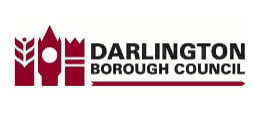Enter your details below and we will call you back as soon as possible:
Woodworm and Dry Rot Treatment
BCS Property Projects offers woodworm and dry rot treatment for wood preservation damp proofing throughout the UK
Timbers in our properties are under constant threat of attack from insects, fungi or both. Floorboards, roof joists, skirting boards and door frames can all be affected by infestation or woodworm or rot, and left untreated an attack can have devastating consequences on a building.

Woodworm is the general name given to insects that attack timbers. There are a variety of different insects, each preferring a different type and condition of wood and each able to cause varying levels of damage. Over the years, our expert surveyors have seen the whole spectrum of infestation types likely to be encountered in UK properties and are on hand to identify whether active woodworm is present and the extent of the damage that has been caused. The tell-tale signs of a woodworm infestation are small flight holes appearing in pieces of timber, often with a small pile of 'dust' being visible around the hole.
Provided that the timbers have not been damaged to an extent where they are no longer structurally sound, the course of action to halt a woodworm infestation is to treat the timbers with an insecticide. Modern low toxicity water-based chemicals are usually sprayed onto the timbers, but in some instances where the timber is particularly dense, they may need to be injected or applied as a paste.
Rot affects timbers that have become wet over a period of time, and is classified as either 'dry rot' or 'wet rot'.

Dry rot occurs when the moisture level of a piece of timber exceeds 20% and is commonly a result of poor building maintenance, for example ignoring a leaking shower tray or failing to clear gutters and downpipes. Signs of dry rot include timbers appearing to shrink or crack, rust-coloured dust appearing on surfaces and a musty damp odour in the property.
The first thing to tackle when dealing with dry rot is the source of moisture. Without identifying and rectifying this, dry rot will reoccur. Any timber that has been affected by the rot should be removed and replaced with new, treated timber. As dry rot has the ability to travel through materials other than timber, a preservative will often be applied to surrounding masonry as well.
Wet rots occur when higher levels of moisture are present, but they cannot spread through masonry and once the source of moisture is removed, they will cease to grow.
Accurate diagnosis of the type of rot will determine the treatment required. Where it is necessary, water-based fungicides and biocides will be applied to the affected areas. All of the products that we use are low-odour, and the treated rooms can usually be re-occupied after a matter of hours.
If you have any enquiries or would like further information about our Woodworm & Rot Treatment services, please contact us.






















